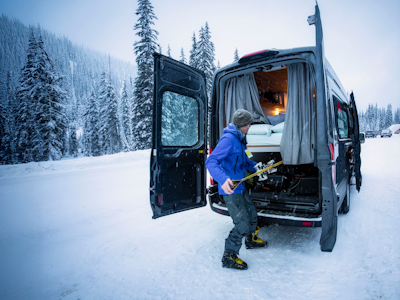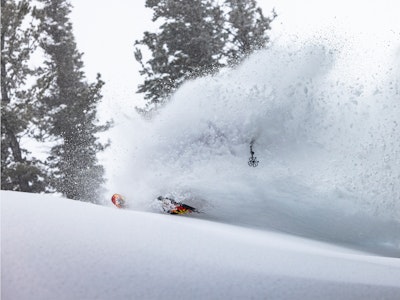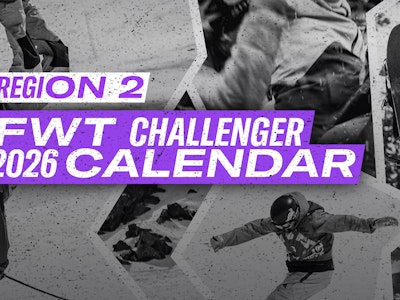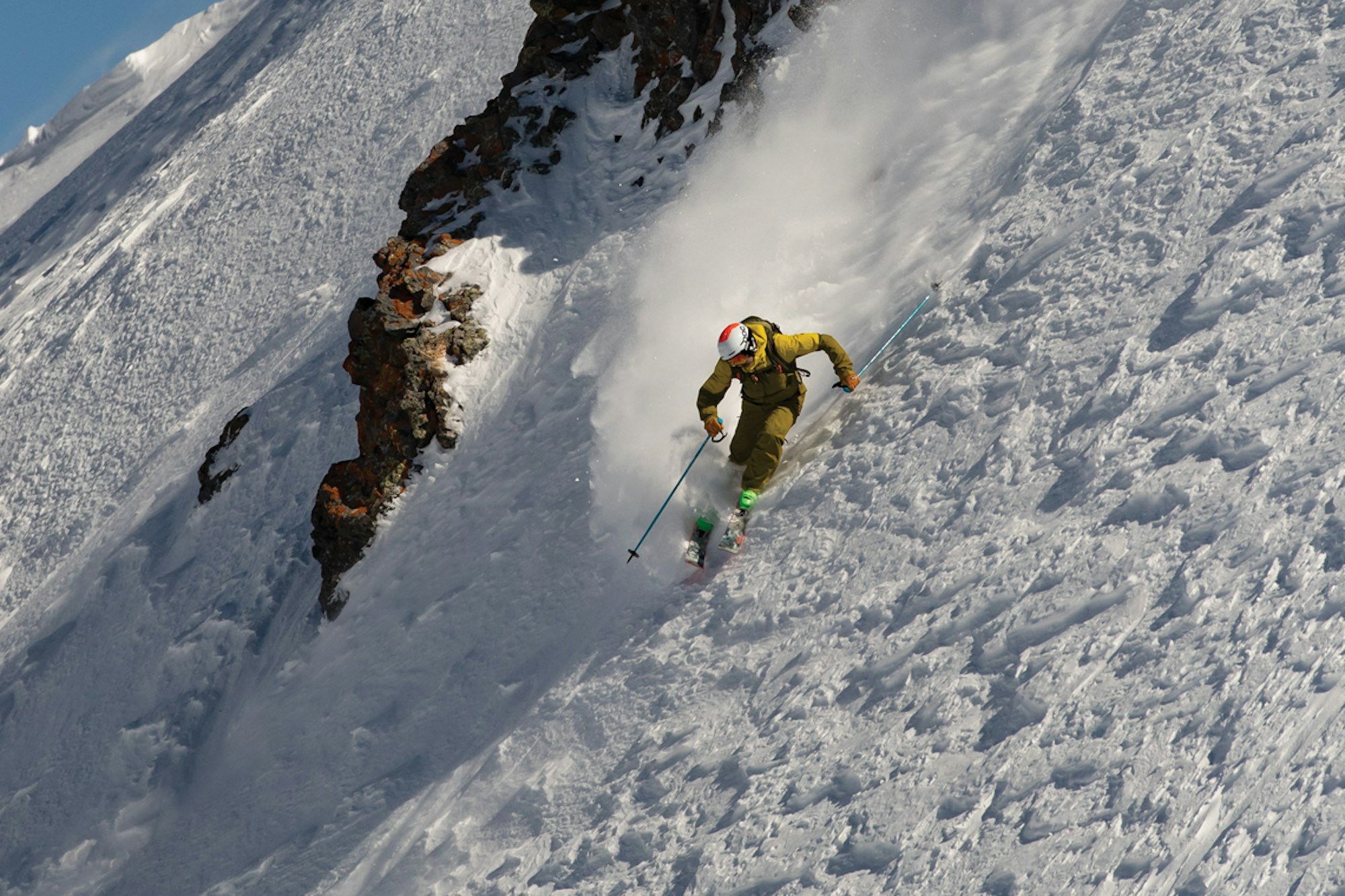With a focus on blending weight savings with downhill skiability, these planks often feature lighter woods and high strength-to-weight ratio composites to make uphill travel efficient and maximize downhill fun. This is FREESKIER’s definitive list of the best backcountry skis of 2020.
4FRNT Hoji
Buy Now – $669


Weight: 1,900 g/ski @ 187 cm
Eric Hjorleifson is undoubtedly a genius when it comes to product design, and his pro model ski is a perfect example. With a 112 millimeter waist and full reverse camber profile, the Hoji is an incredible ski for backcountry powder skiers. Its hybrid poplar-paulownia wood core with tip-to-tail carbon stringers is ideal for touring: lightweight for uphill efficiency, but solid enough to allow for powerful downhill driving and stompage of monster backcountry airs.
Armada ARV 116 JJ Ultralite
Buy Now – $875


Weight: 1,700 g/ski
Armada’s ARV 116 JJ UL is the definition of a backcountry freestyle ski. A caruba wood core makes it 25 percent lighter than the original JJ, with the bulk being taken out of the tip and tail to produce an incredible swing weight to the delight of uphill freestyle enthusiasts everywhere. The ski also employs Armada’s Smear Tech, a three-dimensional bevel in the tip- and tail-bases that defends against catching, promotes butters, presses, overall creativity and makes the ski a dream for hitting backcountry booters.
Atomic Backland 107
Buy Now – $850


Weight: 1,550 g/ski @ 182 cm
While light enough to not drag you down on the skin track, the Backland 107 is definitely built with big descents in mind. A combination of light-as-a-feather caruba and springy poplar wood, a full-length carbon fiber insert and HRZN Tech in the tips—horizontal rocker for better float and deflection—produce a ski that is adept at high speeds, can handle all of the crap snow conditions the backcountry can throw at you and won’t tire you out in the process.
Blizzard Zero G 105
Buy Now – $960


Weight: 1,650 g/ski @ 188 cm
The key to the Zero G is its three-dimensional, unidirectional carbon fiber frame, which offers incredible rigidity across the ski and a stiff flex to complement the lightweight paulownia wood core. Two edge-to-edge layers of carbon fiber in the binding area further ups that stiff, powerful character that Blizzard skis are known for. The tip and tail rocker does allow it to be playful and forgiving, equaling, overall, an incredibly well-rounded touring ski.
Backcountry x DPS Nebo
Buy Now – $1,199


Weight: 1,440 g/ski
A collaborative effort between Backcountry and DPS, the Nebo—named for the highest peak in the Wasatch, the home range of both brands—is built to handle it all. The ski utilizes DPS’ Tour 1 construction as a base, with a balsa wood core, fiberglass and prepreg carbon fiber laminates. However, the ski employs thicker prepreg carbon and dampening materials, more like DPS’ Alchemist collection, in order to create a stiffer ski better engineered to handle high-speed skiing in variable conditions.
Faction Agent 2.0
Buy Now – $849


Weight: 1,570 g/ski
While its 1,570 gram-per-ski weight is certainly respectable among freeride touring skis, the fact that the Agent 2.0 boasts the best strength-to-weight ratio Faction has achieved in 13 years of ski building means it skillfully walks the tight rope between uphill efficiency and downhill reliability. Tip and tail rocker, a lightweight karuba wood core and “surf zones” keeps playfulness top of mind, great for conditions ranging from powder snow to soft spring corn. The Agent’s flat tail, carbon stringers and full-length sidewalls give it a bit of an edge, however, ensuring you can rely on them in firm conditions at speed.
Fischer Hannibal 96
Buy Now – $699.99


Weight: 1,300 g/ski
We encourage you to look past the vibrant new Hannibal topsheet and appreciate it for its skiability, first and foremost. The ski can crush vert, thanks to a 1,300-gram weight, but its downhill prowess can’t be understated. Early rise tips up its float and capabilities in variable snow, while carbon stringers and a titanium reinforcement ensure torsion control is not an issue. The Hannibal is one of our favorites for all-season touring.
G3 FINDr 94
Buy Now – $889


Weight: 1,400 g/ski @ 177 cm
Proudly made in Canada, the all-new FINDr 94 is a ski mountaineer’s dream: It’s light and skinny, but not a toothpick, and packs enough of a downhill punch to hold on during the burliest of descents. A three-dimensional Canadian aspen wood core combined with full length carbon fiber gives it a knockout combo of weight savings and power, while a Titanal mounting plate and polyurethane sidewalls provide the dampness needed for a smooth ride. Bonus: The edges have magnetic contact points, negating the need for straps when shouldering your planks.
Icelantic Mystic 107
Buy Now – $779


Weight: 1,700 g/ski @ 169 cm
Golden, Colorado-based Icelantic’s all-new Mystic 107 is constructed for ease-of-maneuverability, deep snow flotation and efficiency on the skin track. What else could you want? Significant tip rocker and slight rocker in the tail ensure it can pivot on a dime, while camber underfoot keeps ‘er steady when the going gets rough. One hundred percent paulownia wood is used in the core for a supremely lightweight feel, and the classic artwork by Travis Parr will have you sailing Into the Mystic come winter.
K2 Wayback 96
Buy Now – $850


Weight: 1,397 g/ski @ 177 cm
K2 makes it easy to get way back into the wilderness and have astronomical amounts of fun with the Wayback 96. Its paulownia wood core is heavenly light, while carbon fiber and a Titanal laminate help to provide a damp, responsive ride when it comes time to reap the rewards of your long walk in the woods. K2’s Snophobic topsheet also helps shed snow build-up which can bog you down on those long slogs uphill—no sense making a difficult objective harder, right?
Line Vision 108
Buy Now – $900


Weight: 1,605 g/ski
If you’re looking for a lightweight freeride ski that can serve as your daily resort driver or dependable touring ski, take a gander at the all-new Vision 108. A combo platter of paulownia and maple in the core gives a supreme balance of weight savings and muscle, the main goal for any touring ski worth its salt, but Line implements an aramid, carbon and fiberglass laminate into the core, too, in order to really dampen out the ride for a smooth-as-butter feel on the snow.
Salomon QST Stella 106
Buy Now – $900


Weight: 1,680 g/ski @ 174 cm
Salomon’s QST series, of which the Stella is the Queen, was revamped for 2020 and is the ultimate in freeride royalty. The guts of the ski feature lightweight poplar wood, titanium, a flax laminate underfoot and tip-to-tail carbon fiber basalt, that add up to a powerful punch without extra weight. Salomon also incorporated cork in the tip and tail to really dampen out the ride and boost stability even further. If you want to charge, then Stella has your back.
Völkl VTA 108
Buy Now – $825


Weight: 1,560 g/ski @ 173 cm
The VTA 108 is a freeride touring ski, emphasis on freeride. A combination of beech, poplar and paulownia in the core makes it strong, stable, light and responsive, all in one, while an early rise tip ensures you can float the deep and handle variable chop with ease. The use of carbon in the tips also helps to dampen out your ride, so chatter won’t ruin your big day in the mountains. The VTA is A-OK by us.

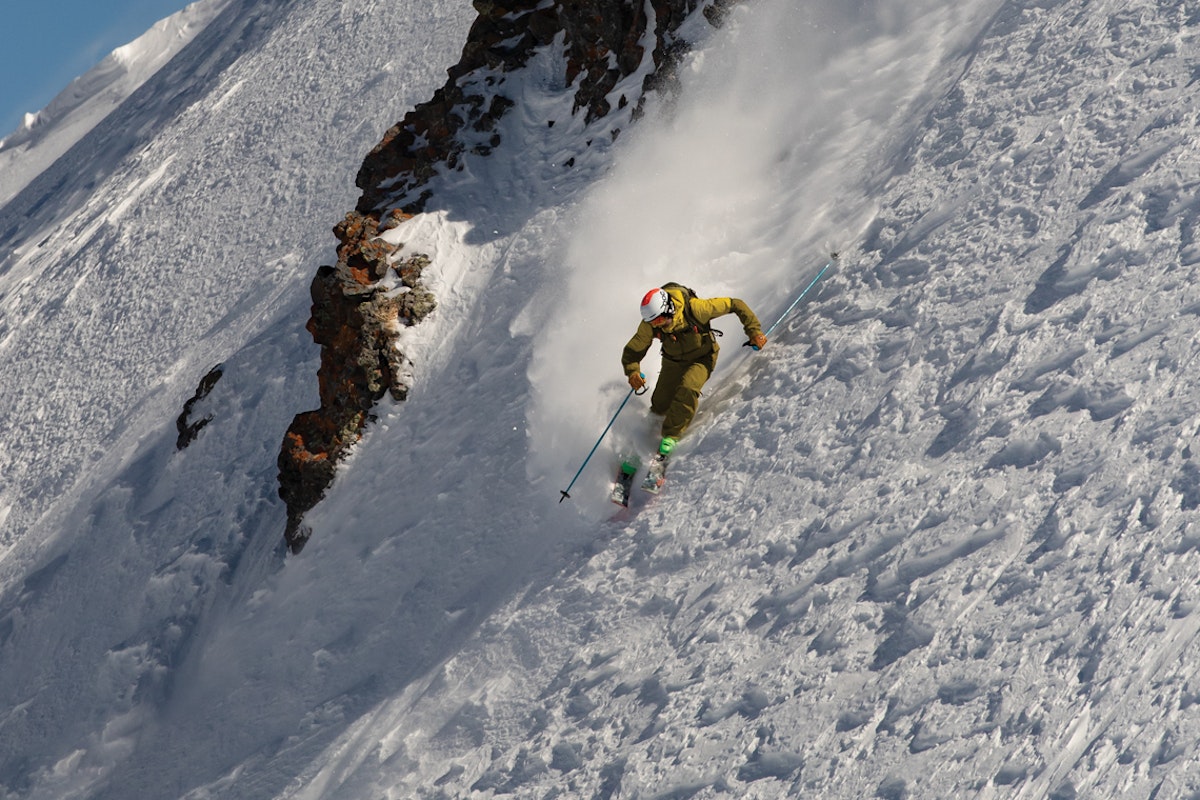

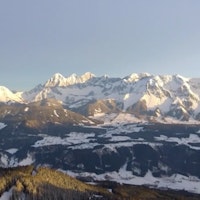

![[GIVEAWAY] Win a 4-Night Karma Campervan Rental and go Ski the Powder Highway](https://www.datocms-assets.com/163516/1767816935-copy-of-dji_0608-1.jpg?w=200&h=200&fit=crop)
![[GIVEAWAY] Win a Legendary Ski Trip with Icelantic's Road to the Rocks](https://www.datocms-assets.com/163516/1765233064-r2r26_freeskier_leaderboard1.jpg?auto=format&w=400&h=300&fit=crop&crop=faces,entropy)


![[GIVEAWAY] Win a 4-Night Karma Campervan Rental and go Ski the Powder Highway](https://www.datocms-assets.com/163516/1767816935-copy-of-dji_0608-1.jpg?auto=format&w=400&h=300&fit=crop&crop=faces,entropy)

